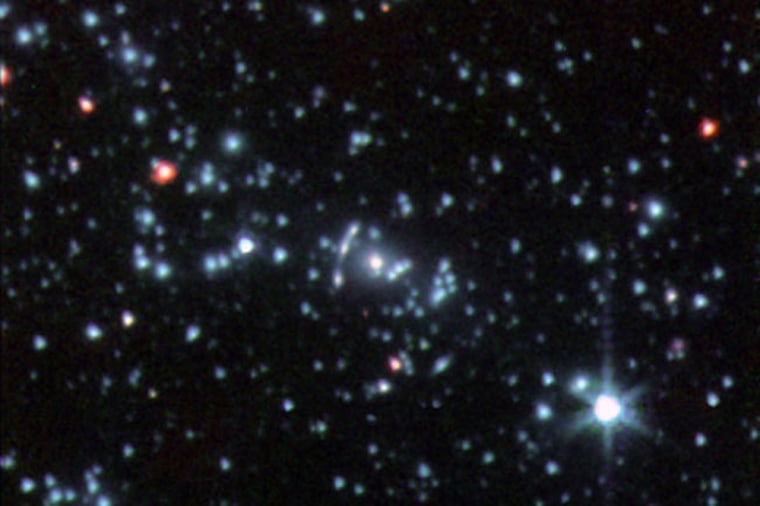Astronomers are watching a galaxy rip to shreds, a finding that could help reveal how galaxies go from stellar riches to rags.
While looking at the galaxy cluster Abell 2667 with the Hubble Space Telescope, scientists found a spiral galaxy which they nicknamed the “Comet Galaxy.”
The gas and stars of the Comet Galaxy — moving through the cluster at speeds of more than 2 million mph — are being stripped away by the tidal forces of the cluster. Also, the pressure of the cluster’s scorching gas plasma — known as ram pressure stripping — is adding to the damage.
“This unique galaxy, situated 3.2 billion light-years from Earth, has an extended stream of bright blue knots and diffuse wisps of young stars driven away by the tidal forces and the ram pressure stripping of the hot dense gas,” said Jean-Paul Kneib, a study collaborator from the Laboratoire d'Astrophysique de Marseille.
Galaxies come in many shapes and sizes. Elliptical galaxies generally have little gas and dust and mainly consist of old stars. Unlike spiral galaxies, which are generally found in isolation, elliptical galaxies are spotted in the center of crowded galaxy clusters.
Up until now, it’s been a mystery as to how a gas-rich spiral galaxy evolves into a gas-poor irregular galaxy or a gas-poor elliptical galaxy. Also, when the universe was half its present age, only one in five galaxies was a gas-poor elliptical galaxy. This has left astronomers wondering where all of the present day elliptical galaxies came from.
Elliptical galaxies, scientists suspect, are transformation products of other types of galaxies, something no one has seen because the process takes billions of years. What they are observing now is some 200 million years into such a process.
“By combining Hubble observations with various ground- and space-based telescopes, we have been able to shed some light on the evolutionary history of galaxies”, said study team leader Luca Cortese of Cardiff University.
The Comet Galaxy — with a little more mass than the Milky Way — will eventually lose its battle against the tidal forces and pressures of the hot plasma acting on it and end up a gas-poor galaxy with a collection of old stars.
“Millions of now homeless stars have been snatched away from their mother galaxy, which will lead the galaxy to age prematurely,” said study co-investigator Giovanni Covone of Osservatorio Astronomico di Capodimonte.
